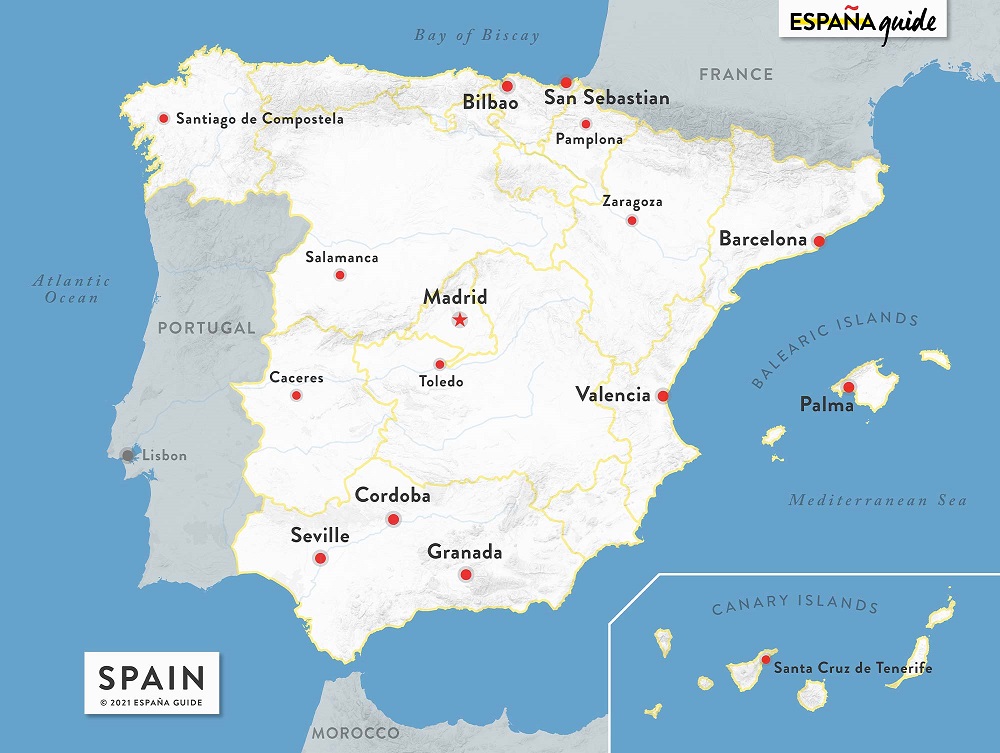Spain, a country known for its rich history, diverse culture, and vibrant festivals, is also home to some of the most stunning natural landscapes in the world. From the snow-capped mountains in the north to the sun-soaked beaches in the south, Spain’s natural beauty is as varied as it is breathtaking. But perhaps the most remarkable of these natural wonders are the country’s national parks and reserves. These protected areas showcase the best of Spain’s diverse ecosystems, providing a haven for wildlife and a playground for nature lovers.
In this exploration of Spain’s natural beauty, we will journey through the country’s national parks and reserves, each offering a unique glimpse into the diverse landscapes and ecosystems that make Spain a paradise for nature lovers. From the volcanic landscapes of the Canary Islands to the lush forests of the Pyrenees, each park tells a story of nature’s resilience and beauty.
Spain’s National Parks: A Testament to Biodiversity
Spain boasts 16 national parks, each one a testament to the country’s incredible biodiversity. These parks span the length and breadth of the country, from the Sierra de las Nieves in the south, inaugurated in 2021, to the little-advertised Cabañeros near Toledo in the heartland, to Teide in the Canary Islands off the western coast of Africa (%1). Each park is unique, offering visitors a chance to explore different landscapes and ecosystems.
These parks are not just tourist attractions; they are also vital for the preservation of Spain’s biodiversity. They serve as a refuge for many species of plants and animals, some of which are endemic to Spain and cannot be found anywhere else in the world. In these parks, nature thrives in its purest form, untouched by the hustle and bustle of urban life.
BEST NATIONAL PARKS AND RESERVES FROM SPAIN
Teide National Park: A Surreal Landscape
Teide National Park, nestled in the heart of the Canary Island of Tenerife, is not just a national park; it’s a testament to the awe-inspiring power of nature and one of the most visited national parks in all of Europe. The park is named after its crowning glory, Mount Teide, which holds the title of the highest peak in Spain and the third-largest volcano in the world. This majestic mountain, with its snow-capped peak and rugged slopes, dominates the landscape and serves as a constant reminder of the island’s volcanic origins.
The landscape of Teide National Park is nothing short of surreal. Imagine vast lava fields stretching as far as the eye can see, their surfaces hardened into intricate patterns by the cooling effects of time. Picture ancient calderas, their edges worn by centuries of erosion, standing as silent witnesses to the volcanic eruptions that shaped this land. Visualize towering volcanic formations, their jagged silhouettes etched against the sky, creating a scene that seems more akin to another planet than an island in the Atlantic Ocean.
Teide National Park is not just a geological wonder; it’s also a UNESCO World Heritage site. This designation is a testament to the park’s global significance and its commitment to preserving the unique landscapes and ecosystems that call it home. From its endemic flora and fauna to its stunning geological formations, Teide National Park is a treasure trove of natural wonders.
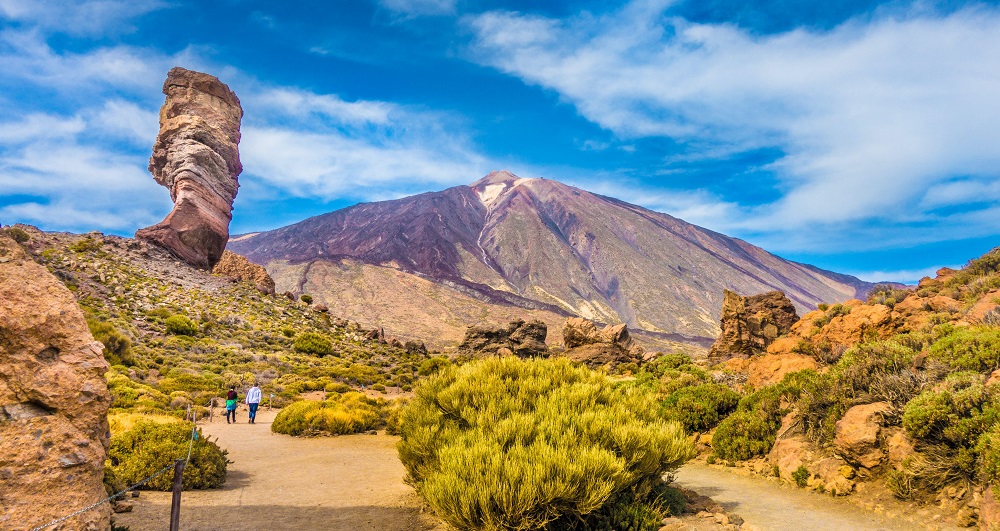
The park offers a myriad of experiences for nature lovers. Hiking enthusiasts can explore the many trails that crisscross the park, each offering unique perspectives of the volcanic landscape. For those who prefer a less strenuous experience, the cable car to the summit of Mount Teide offers breathtaking views of the park and beyond. And for those who simply want to soak in the beauty, there are numerous viewpoints where you can sit back and marvel at the stunning vistas.
But Teide National Park is more than just a place to visit; it’s a place to experience. It’s about feeling the crunch of lava under your feet, seeing the interplay of light and shadow on the volcanic formations, hearing the wind whistle through the canyons, and smelling the fresh scent of pine in the forests. It’s about understanding the power of nature and our place in it.
So, whether you’re a seasoned hiker, a nature photographer, a geology enthusiast, or simply someone who appreciates the beauty of nature, Teide National Park has something for you. Come and explore its vast lava fields, climb its towering peaks, discover its unique flora and fauna, and immerse yourself in its breathtaking landscapes. It’s an adventure that will leave you in awe of nature’s power and beauty, and a memory that will last a lifetime.
Ordesa National Park: Spain’s First National Park
Nestled in the heart of the Pyrenees, Ordesa National Park holds the distinguished title of being Spain’s first national park. This park, with its breathtaking landscapes and rich biodiversity, is a testament to Spain’s commitment to preserving its natural heritage.
Ordesa National Park is a place of stunning beauty, where nature unfolds in all its glory. Imagine waterfalls cascading down steep cliffs, their waters sparkling in the sunlight as they plunge into crystal-clear pools below. Picture rivers and streams carving their way through deep canyons, their waters flowing over rocks worn smooth by time. Visualize lush forests, their trees standing tall and proud, their leaves rustling in the wind. This is Ordesa National Park, a place where nature’s power and beauty are on full display.
But the park is not just about stunning landscapes; it’s also a haven for wildlife. The park is home to a variety of species, including the Pyrenean chamois, a type of goat-antelope native to the region. These agile creatures, with their distinctive horns and nimble feet, are a sight to behold as they navigate the rugged terrain. The park is also home to a variety of bird species, making it a paradise for birdwatchers.
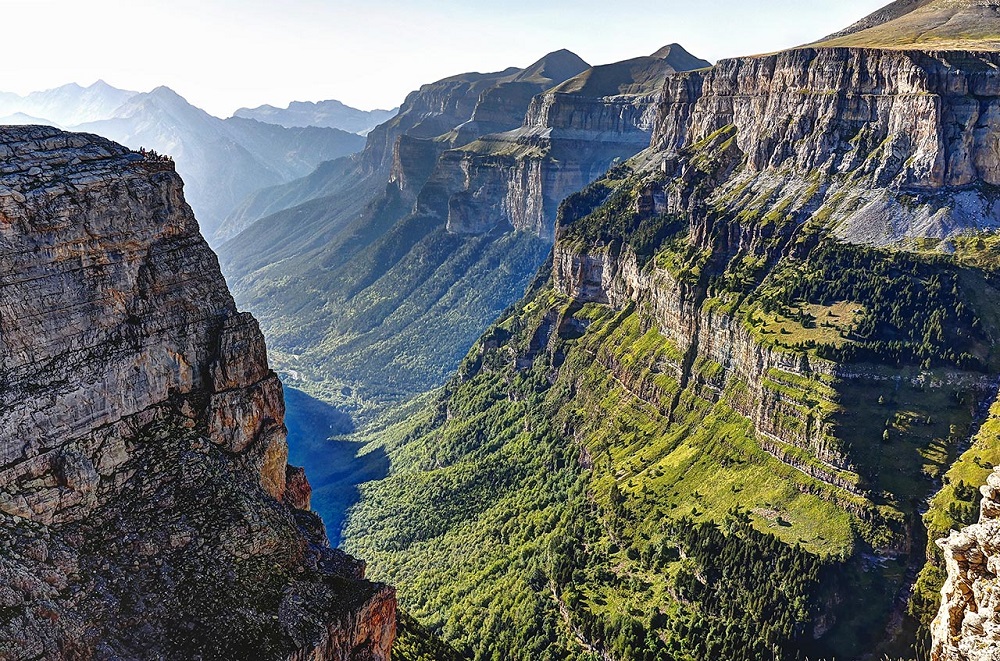
The park’s diverse landscapes, which range from deep valleys to towering peaks, make it a paradise for hikers and nature lovers. Whether you’re trekking through the verdant forests, climbing the rugged peaks, or exploring the deep canyons, you’ll be rewarded with stunning views and encounters with wildlife.
The park’s trails are as diverse as its landscapes. From challenging hikes that take you to the top of towering peaks to leisurely walks through lush forests, there’s a trail for every level of fitness and experience. Each trail offers a unique perspective of the park, with stunning views of waterfalls, forests, and wildlife. Whether you’re an experienced hiker seeking a challenge or a casual walker looking to immerse yourself in nature, Ordesa National Park has a trail for you.
So, come and explore Ordesa National Park. Discover its stunning waterfalls, explore its deep canyons, wander through its lush forests, and encounter its diverse wildlife. Whether you’re hiking its trails, photographing its landscapes, or simply soaking in its natural beauty, Ordesa National Park offers an experience that is both invigorating and awe-inspiring. It’s a place that will leave you with a deeper appreciation for nature and memories that will last a lifetime.
Doñana National Park: A Unique Ecosystem
Located in the southern region of Andalusia, Doñana National Park stands as one of Spain’s most iconic and cherished natural landscapes. This park is not just famous within the confines of Spain; it has garnered international recognition for its unique ecosystem, a harmonious blend of marshes, shallow streams, and sand dunes. This diverse environment provides a nurturing habitat for a wide array of wildlife, including some of Spain’s most endangered species, such as the elusive Iberian lynx and the majestic Spanish imperial eagle.
Doñana National Park is more than just a national park; it’s a beacon of biodiversity. The park’s diverse habitats, ranging from the wetlands that teem with life to the arid sand dunes that stretch as far as the eye can see, support a rich variety of flora and fauna. Each of these habitats is a world unto itself, with its own unique set of species and ecological processes.
The park’s status as a UNESCO World Heritage site is a testament to its global significance and the vital role it plays in preserving biodiversity. This prestigious designation underscores the park’s commitment to conservation and the sustainable management of its unique ecosystems.
One of the park’s most notable features is its role as one of the largest bird reserves in Europe. Doñana National Park is strategically located on the migratory route between Africa and Europe, making it a crucial stopover for a myriad of bird species. From the vibrant flamingos that flock to the park’s wetlands to the rare Spanish imperial eagles that soar in its skies, the park is a birdwatcher’s paradise.
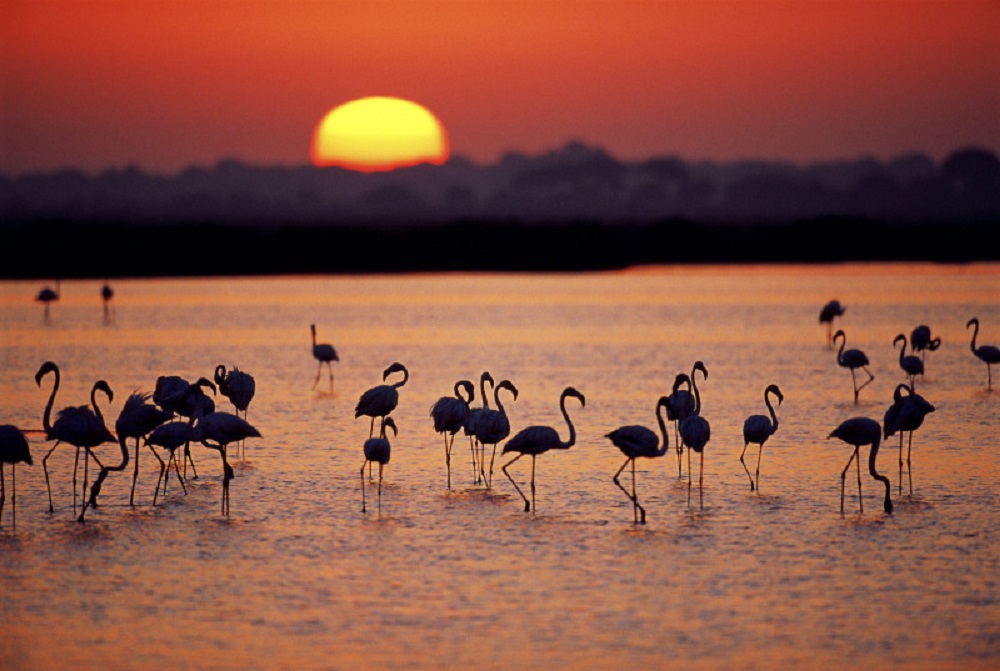
But the park’s appeal extends beyond its birdlife. Whether you’re exploring the park’s vast marshes, trekking through its shifting sand dunes, or spotting wildlife in its dense forests, you’ll be immersed in a world of natural beauty and wonder. The park’s landscapes, with their stark contrasts and stunning vistas, offer a unique blend of wilderness and beauty that captivates all who visit.
So, journey to Andalusia and explore the wonders of Doñana National Park. Discover its unique ecosystems, marvel at its rich biodiversity, and immerse yourself in its stunning landscapes. Whether you’re a nature enthusiast, a birdwatcher, or simply someone who appreciates the beauty of the natural world, Doñana National Park is a destination that promises a memorable and enriching experience. It’s a place where you can connect with nature, learn about the importance of conservation, and leave with a deeper appreciation for our planet’s incredible biodiversity.
Sierra de las Nieves: The Newest National Park
Embark on a journey to the heart of Andalusia to explore the newest addition to Spain’s national parks, Sierra de las Nieves. This park, inaugurated in 2021, is a testament to Spain’s commitment to preserving its natural beauty and biodiversity.
Sierra de las Nieves is a treasure trove of unique flora and fauna. As you traverse its diverse landscapes, you’ll encounter a variety of plant species, some of which are endemic to the region. From Spanish fir trees to gall oaks, the park is a botanist’s dream. The fauna is equally impressive, with species such as the Spanish ibex, golden eagles, and genets calling the park home.
But Sierra de las Nieves is not just a haven for nature lovers. It’s also an important site for biodiversity conservation. The park’s diverse ecosystems provide a refuge for many species, some of which are endangered. By protecting these areas, the park plays a crucial role in preserving Spain’s unique biodiversity.
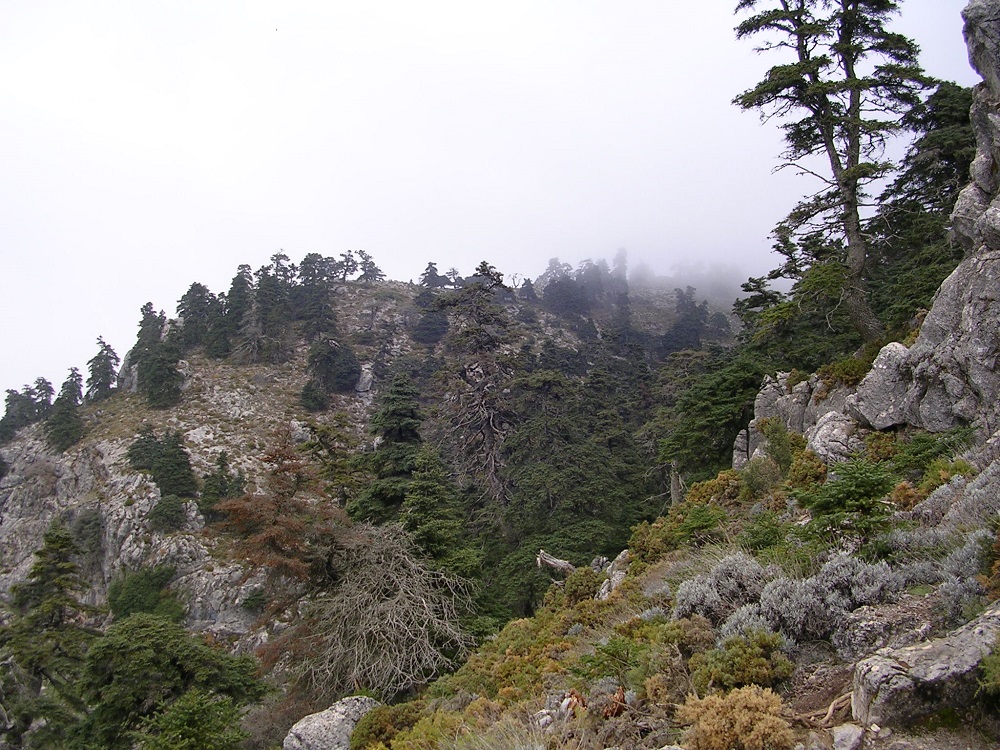
The park also offers a range of activities for visitors. Whether you’re a seasoned hiker looking to conquer new trails, a birdwatcher hoping to spot rare species, or a nature photographer seeking the perfect shot, Sierra de las Nieves has something for everyone.
So come and discover the natural wonders of Sierra de las Nieves. Explore its rugged landscapes, marvel at its unique flora and fauna, and learn about the vital role it plays in biodiversity conservation. It’s an adventure you won’t want to miss.
Cabañeros National Park: The Hidden Gem
Venture into the heartland of Spain, away from the bustling cities and crowded beaches, and you’ll find yourself in the midst of the serene beauty of Cabañeros National Park. Nestled between the provinces of Ciudad Real and Toledo, this park is a testament to the country’s diverse landscapes and rich biodiversity.
Cabañeros National Park is a place of contrasts, where the rugged mountains meet the vast plains, creating a unique blend of ecosystems. As you explore the park, you’ll traverse through dense forests, cross bubbling streams, and hike up rocky slopes. Each of these habitats is home to a variety of plant and animal species, making the park a hotspot for biodiversity.
The park is home to a diverse range of wildlife. From the majestic red deer and the elusive Iberian lynx to the imperial eagle soaring high above, the park is a haven for wildlife enthusiasts. As you wander through the park, keep your eyes peeled for these creatures and more. Each sighting is a reminder of the rich biodiversity that calls Cabañeros National Park home.
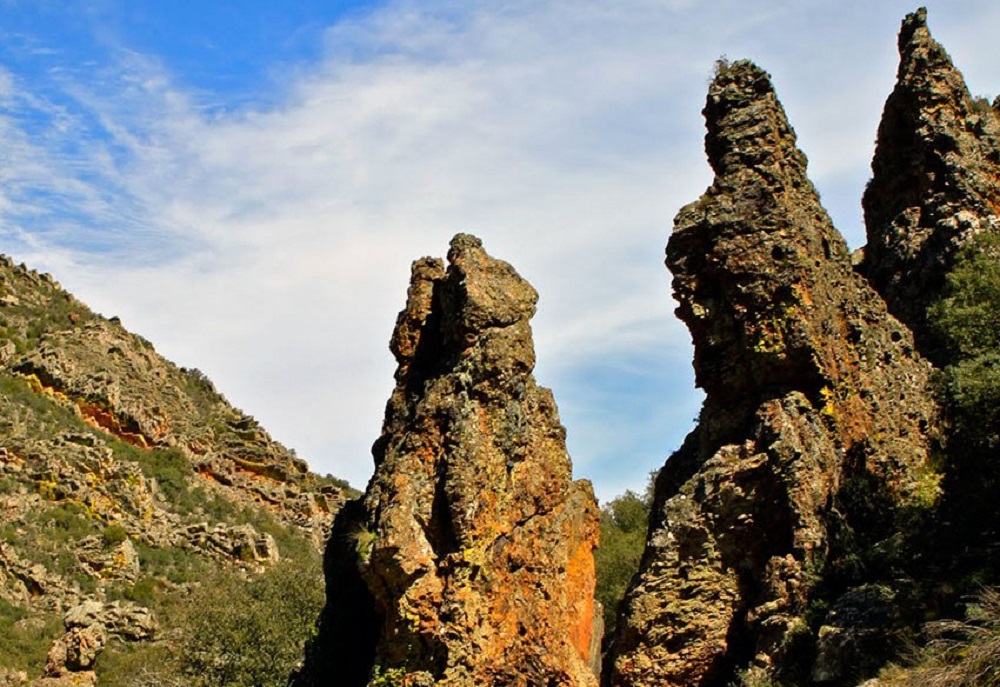
But the park is not just about wildlife. It’s also a place of stunning beauty. Whether you’re watching the sunrise over the plains, hiking through the lush forests, or simply enjoying the tranquility of nature, you’ll be captivated by the park’s natural beauty.
Learning about the park’s diverse ecosystems is a key part of the experience. Through guided tours and educational programs, visitors can gain a deeper understanding of the park’s unique habitats and the wildlife that inhabit them. This knowledge not only enhances the visitor experience but also fosters a greater appreciation for nature and the importance of conservation.
So, venture into the heartland of Spain and uncover the beauty of Cabañeros National Park. Explore its diverse ecosystems, marvel at the wildlife that call it home, and immerse yourself in the tranquility of nature. It’s an adventure that promises to be both educational and awe-inspiring.
Caldera de Taburiente National Park: A Geological Marvel
Embark on a journey to the Canary Islands, a Spanish archipelago off the coast of northwestern Africa, and prepare to be awestruck by the geological wonders of Caldera de Taburiente National Park. This park, located on the island of La Palma, is a testament to the dynamic forces that shape our planet and create unique and breathtaking landscapes.
Caldera de Taburiente National Park is a geological marvel, its centerpiece being a massive crater formed by volcanic activity millions of years ago. The park’s name, “Caldera,” is derived from the Spanish word for cauldron, a fitting description for the vast, bowl-shaped valley that lies at the heart of the park. This caldera, one of the largest in the world, is a sight to behold, with its steep walls rising dramatically from the valley floor.
The park’s volcanic origins are evident everywhere you look. From the rugged cliffs and deep gorges carved by ancient lava flows to the colorful mineral deposits that paint the landscape in hues of red, yellow, and green, the park is a living testament to the power of volcanic activity. As you explore the park, you’ll discover a variety of volcanic features, including lava tubes, domes, and vents, each telling a piece of the park’s fiery history.
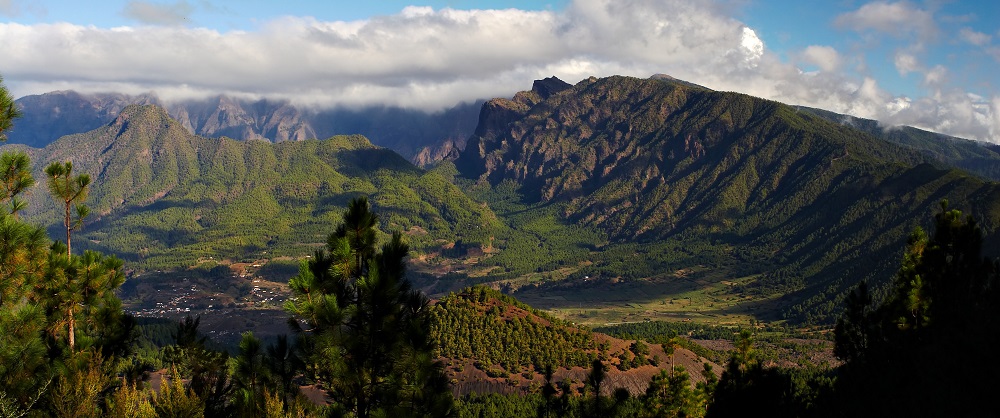
But Caldera de Taburiente National Park is not just about geology. The park’s unique landscapes have given rise to a diverse range of habitats, from the arid, rocky slopes of the caldera to the lush pine forests that blanket the higher elevations. These habitats are home to a variety of plant and animal species, some of which are endemic to the Canary Islands.
Exploring Caldera de Taburiente National Park is an adventure like no other. Whether you’re hiking the park’s challenging trails, photographing its stunning landscapes, or simply marveling at the power of nature, you’re sure to leave with a deeper appreciation for our planet’s geological wonders.
So, journey to the Canary Islands and explore the geological wonders of Caldera de Taburiente National Park. Discover its volcanic origins, marvel at the unique landscapes it has created, and immerse yourself in the beauty and mystery of this extraordinary place. It’s an adventure that promises to be both educational and awe-inspiring.
The Role of National Parks in Conservation
Spain’s national parks play a crucial role in conservation. They protect some of the country’s most important ecosystems, providing a refuge for countless species of plants and animals. Many of these species are endemic to Spain, meaning they are found nowhere else in the world. By preserving these areas, Spain is helping to protect its unique biodiversity for future generations.
These parks are not just about preserving nature; they also play a crucial role in educating the public about the importance of conservation. Through guided tours, educational programs, and interactive exhibits, visitors can learn about the importance of biodiversity and the role they can play in conservation efforts.
Exploring Spain’s National Parks
Visiting Spain’s national parks is a rewarding experience. Whether you’re hiking through the rugged mountains of the Pyrenees, exploring the volcanic landscapes of Teide, or bird-watching in the marshes of Doñana, you’re sure to be awed by the country’s natural beauty. Just remember to respect the environment and follow the park rules to ensure these natural treasures can be enjoyed by future generations.
Each park offers a unique experience, with a variety of activities to suit all interests. Whether you’re a nature lover, a wildlife enthusiast, a hiker, or a photographer, Spain’s national parks offer something for everyone. So pack your bags, lace up your hiking boots, and get ready to explore the natural beauty of Spain.
Spain’s national parks and reserves are a testament to the country’s natural beauty and biodiversity. From the highest peaks to the deepest valleys, these protected areas offer a glimpse into the country’s diverse landscapes and ecosystems. So whether you’re a nature lover, a wildlife enthusiast, or just someone who appreciates beautiful scenery, Spain’s national parks are a must-visit.




